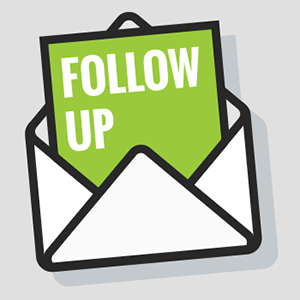 Many times when you meet a new business connection, whether that person is a fellow entrepreneur or a potential customer, it can be a challenge to fit what you need to into that first conversation. You are busy, and so are they.
Many times when you meet a new business connection, whether that person is a fellow entrepreneur or a potential customer, it can be a challenge to fit what you need to into that first conversation. You are busy, and so are they.
Enter the follow-up email!
The follow-up email is probably something that you’re already familiar with, and it’s more than merely a formality. It’s a chance to strengthen the business connection you’ve made and to move that conversation forward, so writing the perfect follow-up email is a great way to do that. Here are our steps to writing the perfect follow-up email.
Step 1: Know What You Want to Achieve
A follow-up email can help support a wide variety of different objectives, and knowing what you want to achieve is an essential starting place. Maybe you want to get more information or the answer to a question you’ve had since you last spoke. Maybe you want to arrange a meeting. Maybe you’re working to finalize a sale after your customer mentioned a purchase they wanted to make. Keep that objective in mind as you write.
Step 2: Jog Their Memory
Making sure that you and the recipient of your email are on the same page is essential, so be sure to begin your email with some context. Remind them of who you are and when you last talked, then be sure to remind them which point you are following up on. For example, if you met a prospective customer at a networking event you could say “I just wanted to touch base with you after meeting you last week at the South Central networking event …”
Be ready for them to not remember talking to you, though—and it’s okay if they don’t! If they don’t remember you, using specific details will help ensure that your follow-up doesn’t come across as a cold email technique.
Step 3: Explain Why You’re Emailing
If you had a previous conversation about a specific product in the last step, you might have already done this. If not, be sure to explain why you’re emailing. Did you discuss a product that you’re hoping to sell them? Did you mention that you would be happy to send them a digital catalog? Did they mention an upcoming brand update for which you have products to recommend? Take a moment to mention it.
Step 4: Include a Call to Action
So what’s next? Let your customer know. Ask them if they are interested in more information or whether you can schedule another conversation in the next week.
Step 5: Wrap it Up and Send!
Now that you’ve got the email written, it’s time to sign it and send it. Before you hit that “send” button, though, take a moment to read it through. You want to be sure that the email is short and to the point, and you want to make sure that it comes across as friendly and professional. After you’ve reviewed, send it their way.
How do you ensure that your follow-up emails are perfect? We’d love to see your tips and tricks in the comments below.
 You’ve made it past the initial elevator pitch. Your new customer is interested. You’ve scheduled a meeting. You might be tempted to create a big presentation that will take most of your allotted time.
You’ve made it past the initial elevator pitch. Your new customer is interested. You’ve scheduled a meeting. You might be tempted to create a big presentation that will take most of your allotted time. Whether it’s icy roads or a sudden snowfall keeping people indoors, doing business with customers in the winter can be a real challenge. And, when you’re faced with inclement weather, it can be a challenge to market to your customers as well. Here are just a few marketing strategies that you can employ even if your customers—or you—can’t make it to your storefront in person.
Whether it’s icy roads or a sudden snowfall keeping people indoors, doing business with customers in the winter can be a real challenge. And, when you’re faced with inclement weather, it can be a challenge to market to your customers as well. Here are just a few marketing strategies that you can employ even if your customers—or you—can’t make it to your storefront in person.